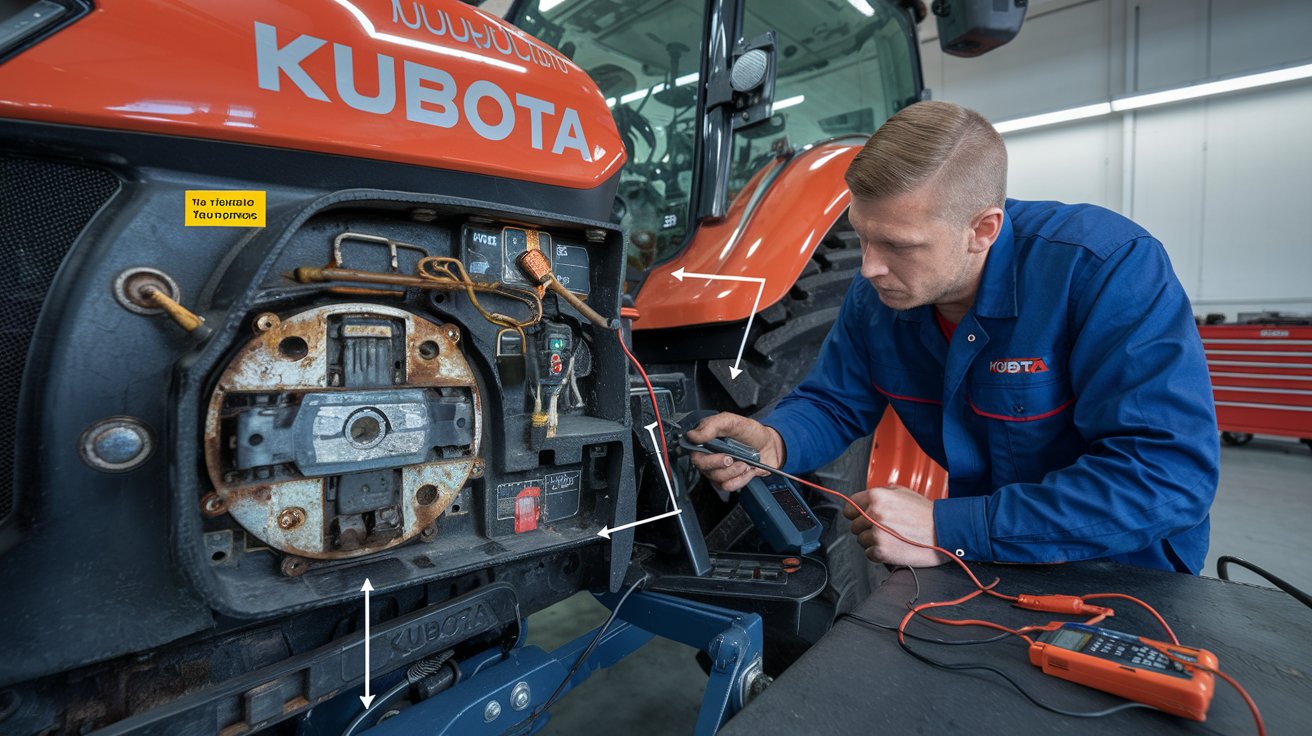Cub Cadet zero-turn steering problems can disrupt your mowing experience, but understanding common issues like uneven steering, hydraulic malfunctions, and electronic glitches can help you take control. This guide covers when to seek professional help, preventive maintenance tips, and upgrade options to enhance steering performance. By following a regular maintenance schedule and considering cost-effective upgrades, you can ensure your mower operates smoothly and efficiently for years to come.
“Frustrated with uneven steering? Discover the hidden culprits behind Cub Cadet zero-turn steering problems!”
“Find out how a simple upgrade can turn your mower’s steering from sluggish to seamless.”
“Want your mower to last longer? Don’t miss these essential maintenance tips to avoid costly repairs!”
“Is your Cub Cadet ready for next season? Learn how seasonal upkeep can make a world of difference.”
This article dives into Cub Cadet zero turn steering problems, their causes, and how you can fix them, ensuring your mower operates smoothly and efficiently.
Understanding Zero Turn Technology
What Makes a Mower “Zero Turn”?
A zero-turn mower earns its name from its ability to make a full 360-degree turn with zero radius. This is achieved through independent hydraulic control of each rear wheel, allowing precise movements and effortless maneuvering around tight corners and obstacles.
Benefits of Zero Turn Mowers
- Enhanced Maneuverability: Perfect for navigating around trees, flowerbeds, and lawn edges.
- Time Efficiency: Covers large areas quickly due to faster speeds and tight turns.
- Professional Results: Delivers clean, evenly cut grass, even in tricky spaces.
Cub Cadet’s Zero Turn System
Cub Cadet zero-turn mowers are built with advanced technology, offering intuitive steering and high durability. Features like dual hydrostatic transmissions and ergonomic controls make them a favorite among homeowners and professionals. However, even these reliable machines can occasionally run into issues.
Common Steering Issues in Cub Cadet Mowers
Steering problems can turn your mowing task into a frustrating experience. Below are the most common issues Cub Cadet users report:
- Unresponsive Steering
- The mower doesn’t respond to steering input, making control difficult.
- Drifting or Pulling to One Side
- The mower veers to one side, even when steering straight.
- Excessive Vibration
- Strong vibrations in the steering system reduce comfort and precision.
- Difficulty Making Tight Turns
- The mower struggles with its hallmark tight turns, often needing extra effort.
Diagnosing Steering Problems
Proper diagnosis is the first step toward resolving your mower’s steering issues. Use this guide to identify potential problems:
Visual Inspection Checklist
- Check the Tires: Ensure they are properly inflated and free from damage.
- Inspect Linkages and Cables: Look for wear, rust, or damage in the steering components.
- Examine Hydraulic Components: Check for leaks or low hydraulic fluid levels.
Testing Steering Responsiveness
- Perform a test run and note any delays in steering input.
- Observe how the mower handles straight paths and turns.
Identifying Unusual Noises or Vibrations
- Listen for grinding, squeaking, or other unusual sounds during operation.
- Feel for vibrations that could indicate loose or worn-out parts.
DIY Fixes for Minor Steering Issues
For minor issues, you can often fix your Cub Cadet’s steering without professional help. Here are some effective DIY solutions:
Adjusting Steering Tension
- Use the adjustment bolts on the control levers to fine-tune tension.
- Ensure both levers are balanced for symmetrical steering.
Lubricating Moving Parts
- Apply grease to steering linkages, pivot points, and other moving parts.
- Use a high-quality lubricant recommended by Cub Cadet to prevent wear and tear.
Replacing Worn Components
- Inspect and replace worn-out belts, bushings, or cables.
- Use genuine Cub Cadet parts to maintain optimal performance.
Aligning Wheels and Deck
- Adjust the front caster wheels to ensure they are aligned with the rear wheels.
- Level the mower deck to prevent uneven cuts and reduce strain on the steering.
Troubleshooting Table: Common Problems and Solutions
| Problem | Possible Cause | DIY Solution |
| Unresponsive steering | Loose control levers or worn cables | Adjust tension; replace cables |
| Drifting to one side | Uneven tire pressure or hydraulic issue | Inflate tires evenly; check hydraulic fluid |
| Excessive vibration | Loose bolts or worn bushings | Tighten bolts; replace bushings |
| Tight turns difficult | Misaligned wheels or dry linkages | Align wheels; lubricate linkages |
When to Seek Professional Help
While many steering issues can be resolved with DIY fixes, some problems require professional attention. Here’s when to consider expert help:
1. Complex Mechanical Problems
- Damaged steering linkages or components like bushings and bearings.
- Bent or broken parts that require specialized tools to replace.
2. Hydraulic System Issues
- Persistent fluid leaks from pumps or lines.
- Air trapped in the hydraulic system, leading to erratic steering.
- Low or contaminated hydraulic oil that needs flushing.
3. Electronic Control Malfunctions
- Issues with steering sensors or wiring in models equipped with electronic steering.
- Fault codes that require diagnostic tools to identify and fix.
In such cases, delaying repairs can worsen the issue, leading to costly downtime and repairs.
Preventive Maintenance for Optimal Steering
Regular maintenance can keep your Cub Cadet zero-turn mower running smoothly while preventing steering problems. Here’s how to stay on top of it:
1. Regular Inspection Schedule
- Weekly Checks: Inspect hydraulic fluid levels and clean any debris around the steering system.
- Monthly Maintenance: Check for loose or worn parts in the steering linkages and lubricate pivot points.
- Seasonal Overhaul: At the start and end of each mowing season, inspect the hydraulic system, clean filters, and replace fluids if necessary.
2. Proper Cleaning Techniques
- Avoid using high-pressure water directly on the hydraulic system or electronic components.
- Wipe down steering levers and linkages with a clean cloth after every use.
- Use a gentle degreaser to remove buildup from moving parts.
3. Seasonal Maintenance Tips
- Spring: Check tire pressure and alignment, as uneven tires can impact steering performance.
- Fall: Flush hydraulic oil and replace with manufacturer-recommended fluids.
4. Storage Recommendations
- Store your mower in a dry, sheltered location to prevent rust and corrosion.
- Use a breathable cover to keep dust and moisture out.
- Drain fuel or add a stabilizer to avoid gum buildup, which can affect performance.
Upgrading Your Cub Cadet’s Steering System
If maintenance isn’t enough, upgrading your mower’s steering system can improve its performance significantly. Let’s explore the options:
1. Available Aftermarket Improvements
- High-Performance Hydraulic Pumps: Designed for smoother and more responsive steering.
- Heavy-Duty Linkages: These upgrades are more durable and reduce wear over time.
- Aftermarket Steering Levers: Ergonomically designed levers can reduce user fatigue and enhance control.
2. Factory Upgrade Options
- OEM Hydraulic Parts: Replacing worn components with genuine Cub Cadet parts ensures compatibility and longevity.
- Advanced Electronic Systems: For newer models, upgrading to enhanced electronic steering modules can improve precision.
3. Cost-Benefit Analysis of Upgrades
Upgrades can extend the life of your mower, but it’s essential to weigh the costs against the benefits. Here’s a quick comparison:
| Upgrade Option | Average Cost | Benefits |
| High-Performance Hydraulic Pumps | $200–$400 | Smoother, more responsive steering |
| Heavy-Duty Linkages | $100–$300 | Longer-lasting components |
| OEM Hydraulic Parts | $150–$350 | Ensures compatibility |
| Ergonomic Steering Levers | $50–$150 | Enhanced user comfort |
While some upgrades may seem costly, they can save you money in the long run by reducing downtime and repair expenses.
Conclusion
Addressing Cub Cadet zero turn steering problems doesn’t have to be overwhelming. With a bit of knowledge and regular maintenance, you can keep your mower running smoothly for years to come. Whether it’s adjusting steering tension or aligning the wheels, these fixes can restore your Cub Cadet’s performance and save you time and frustration.
If you have more questions or need additional guidance, feel free to share your experiences or concerns in the comments below. Let’s get your mower back on track!

